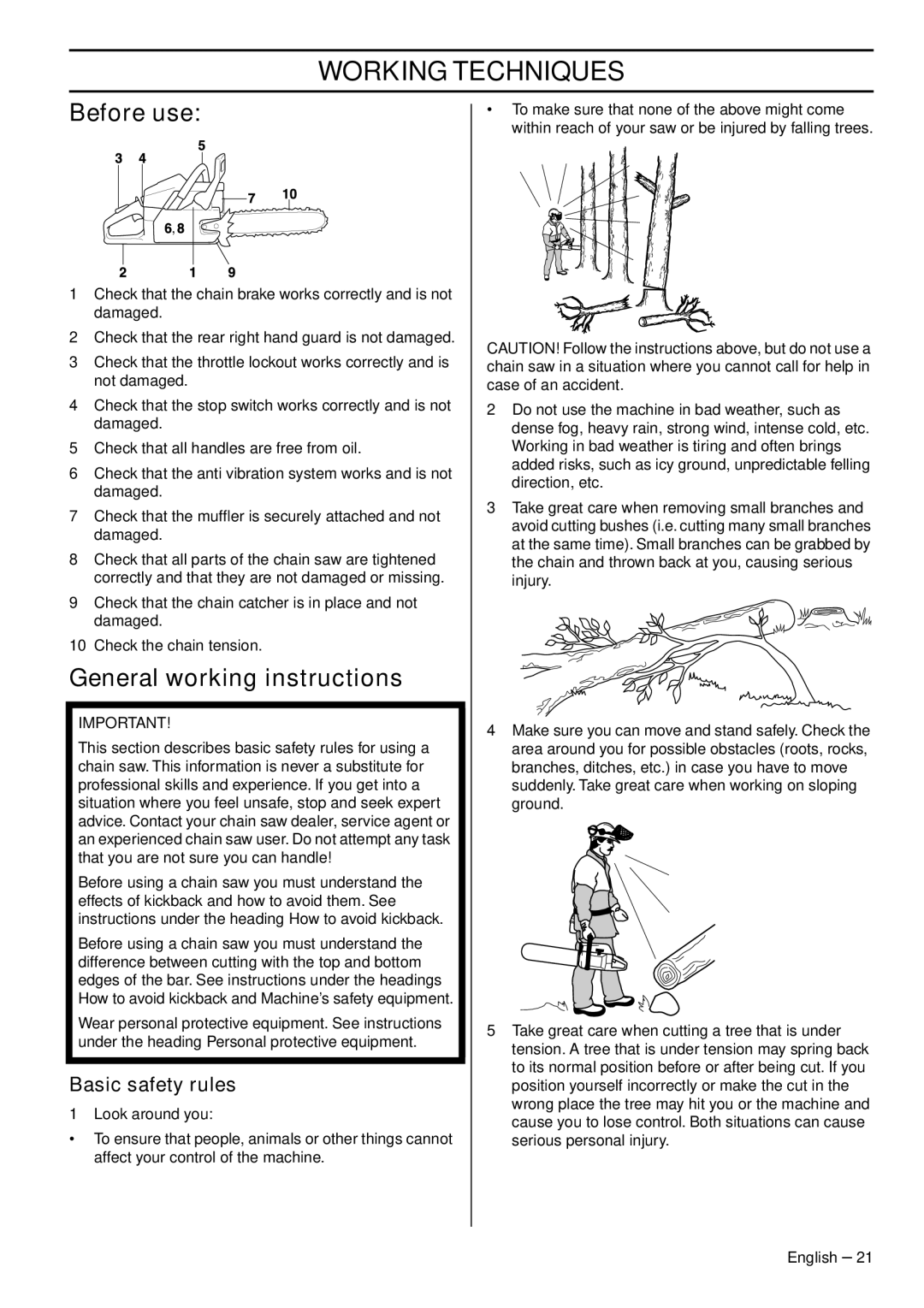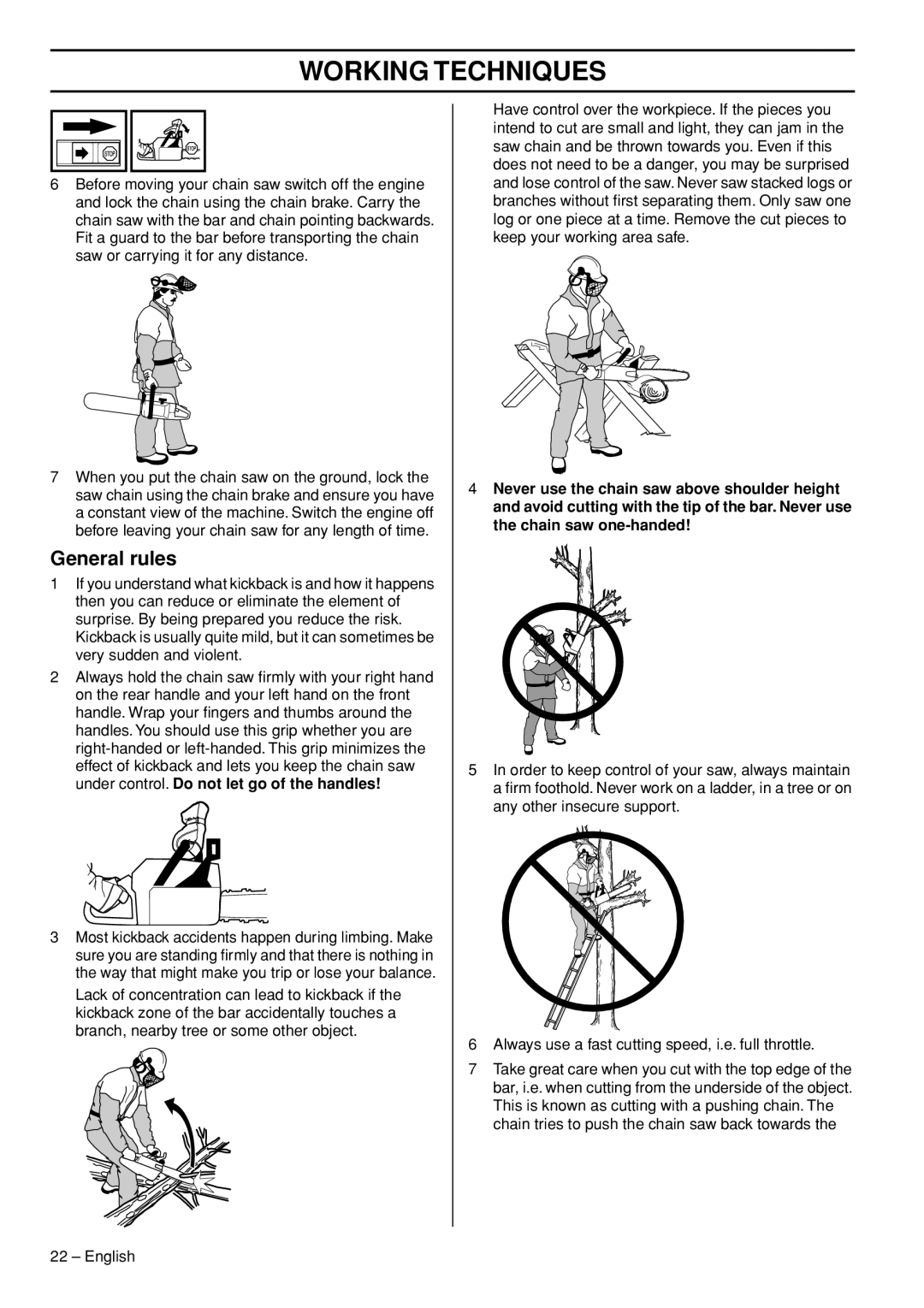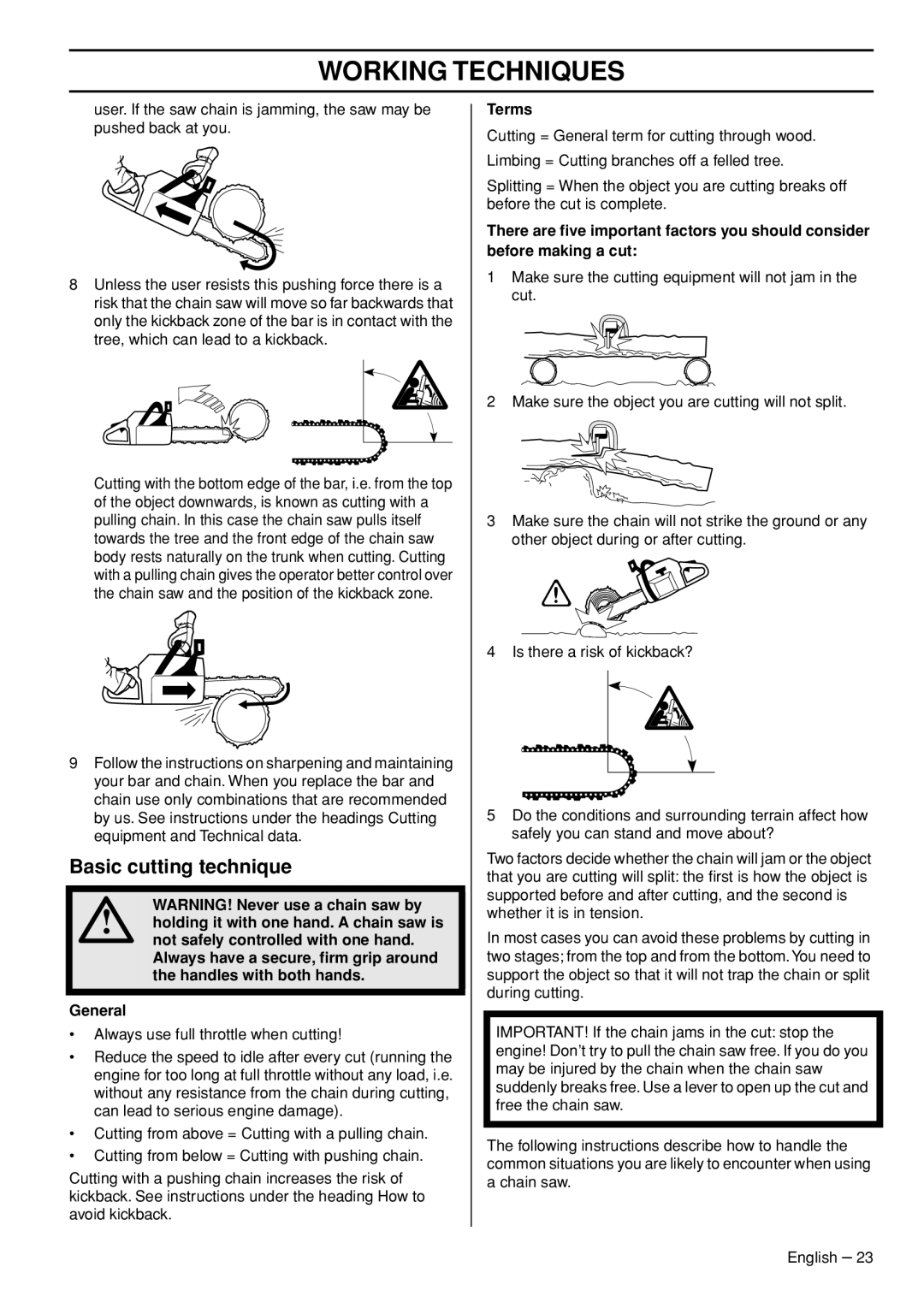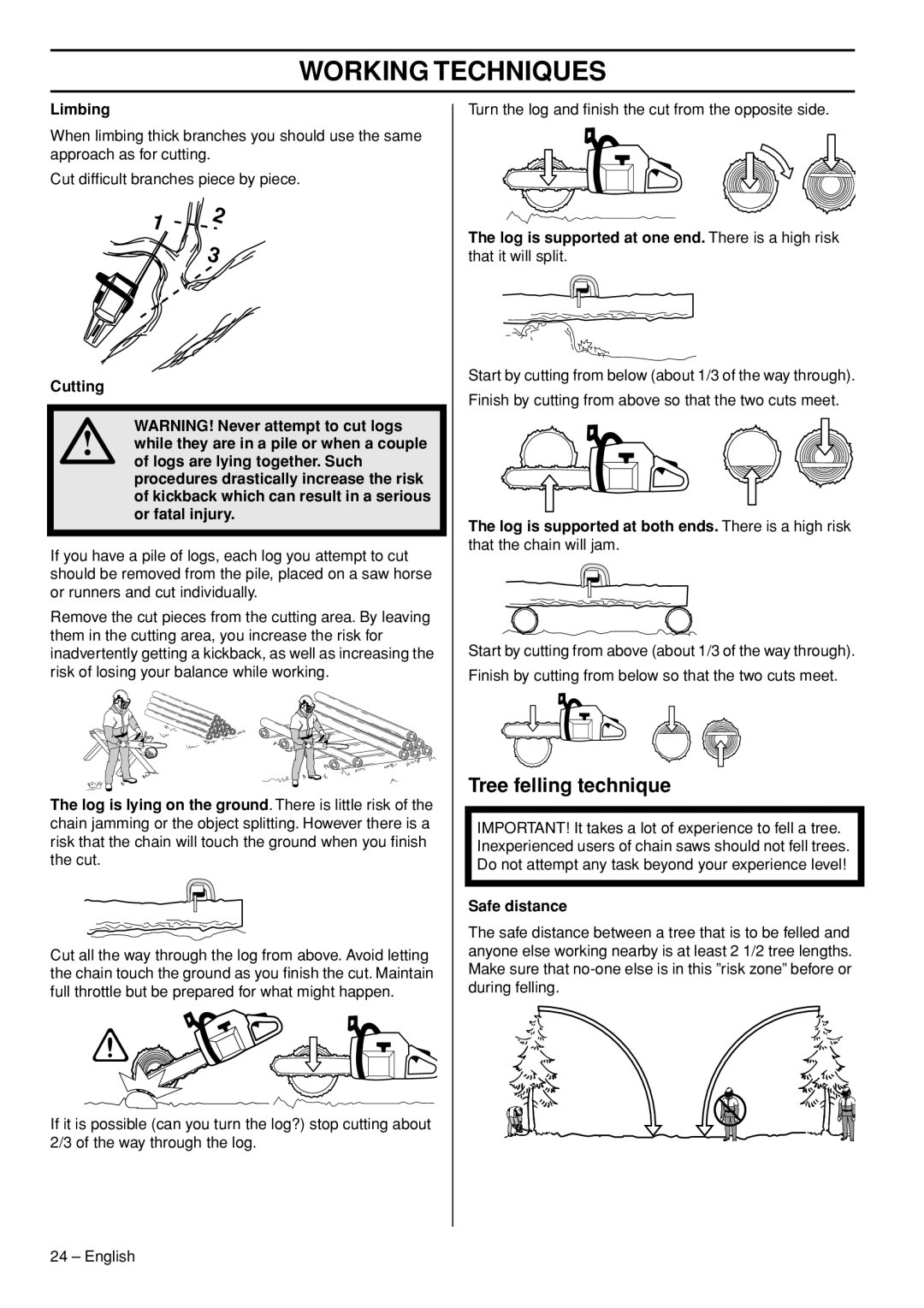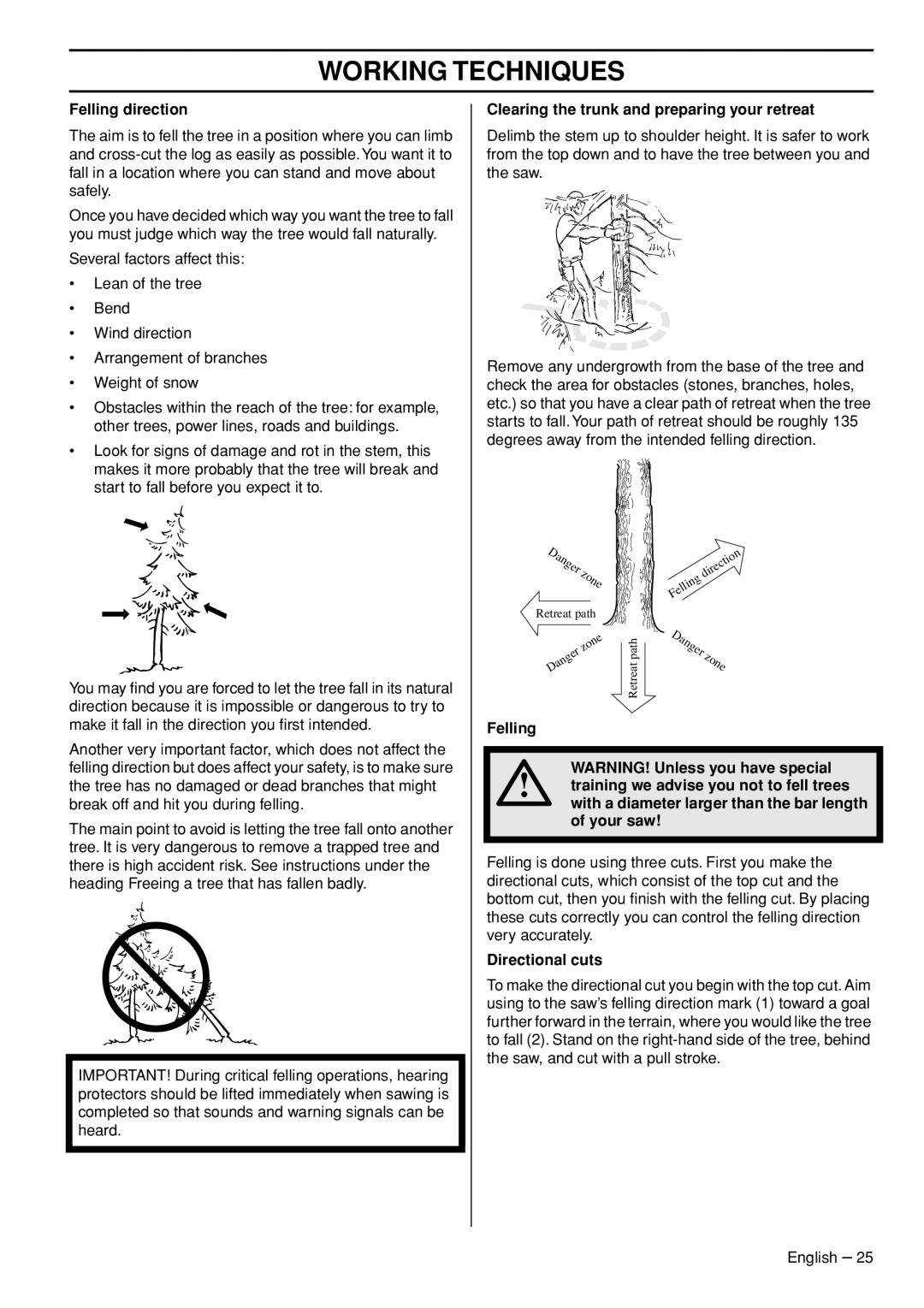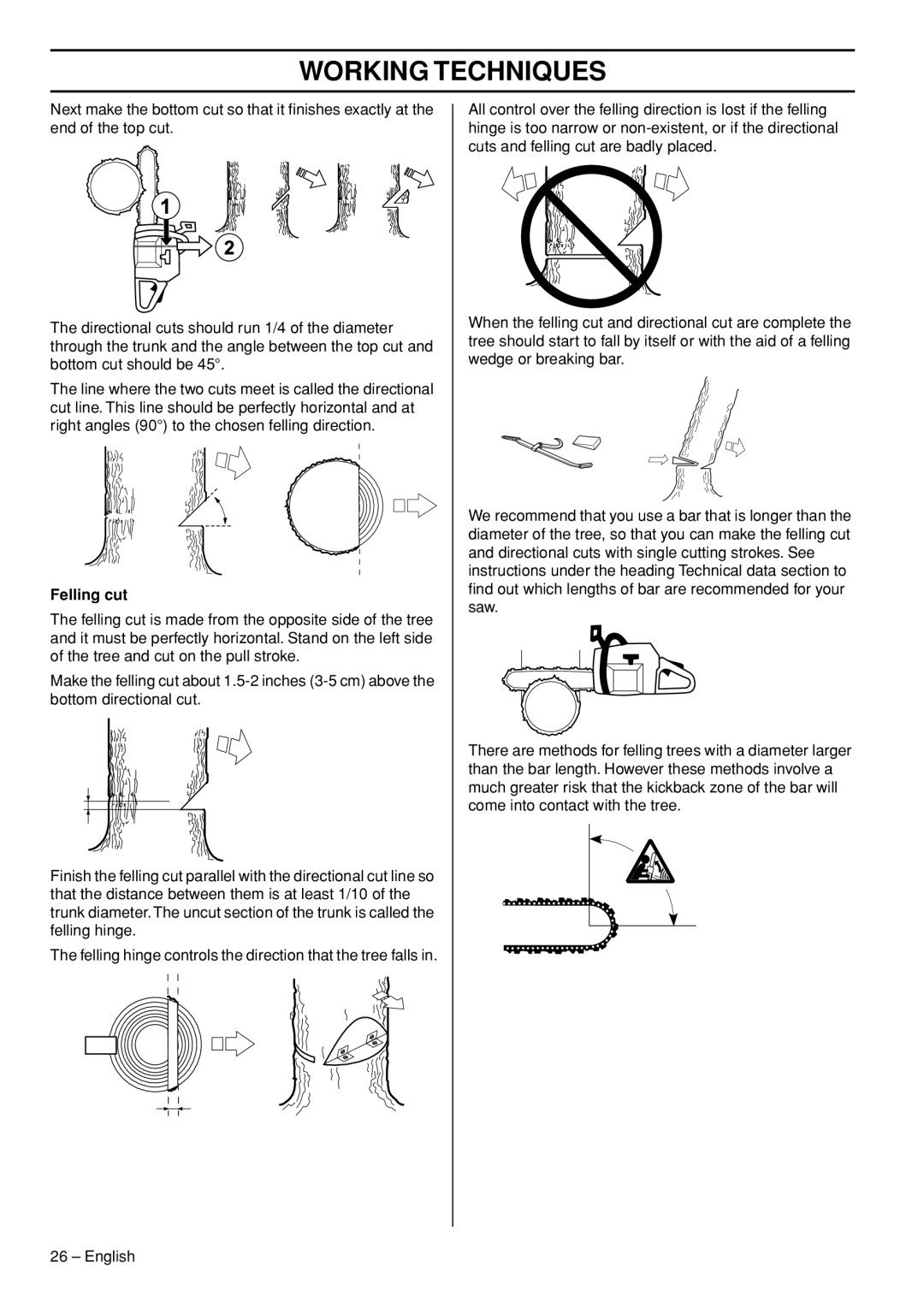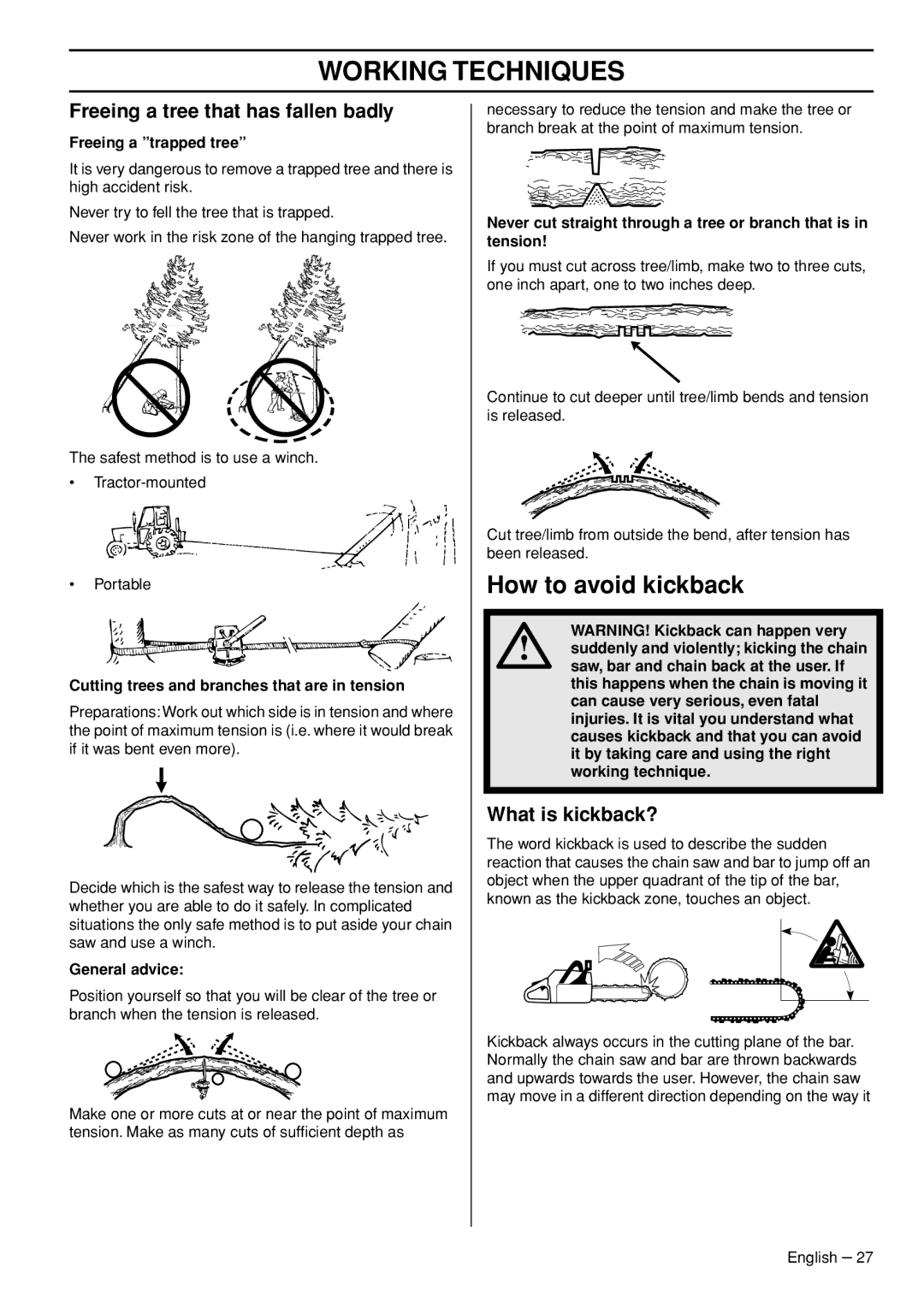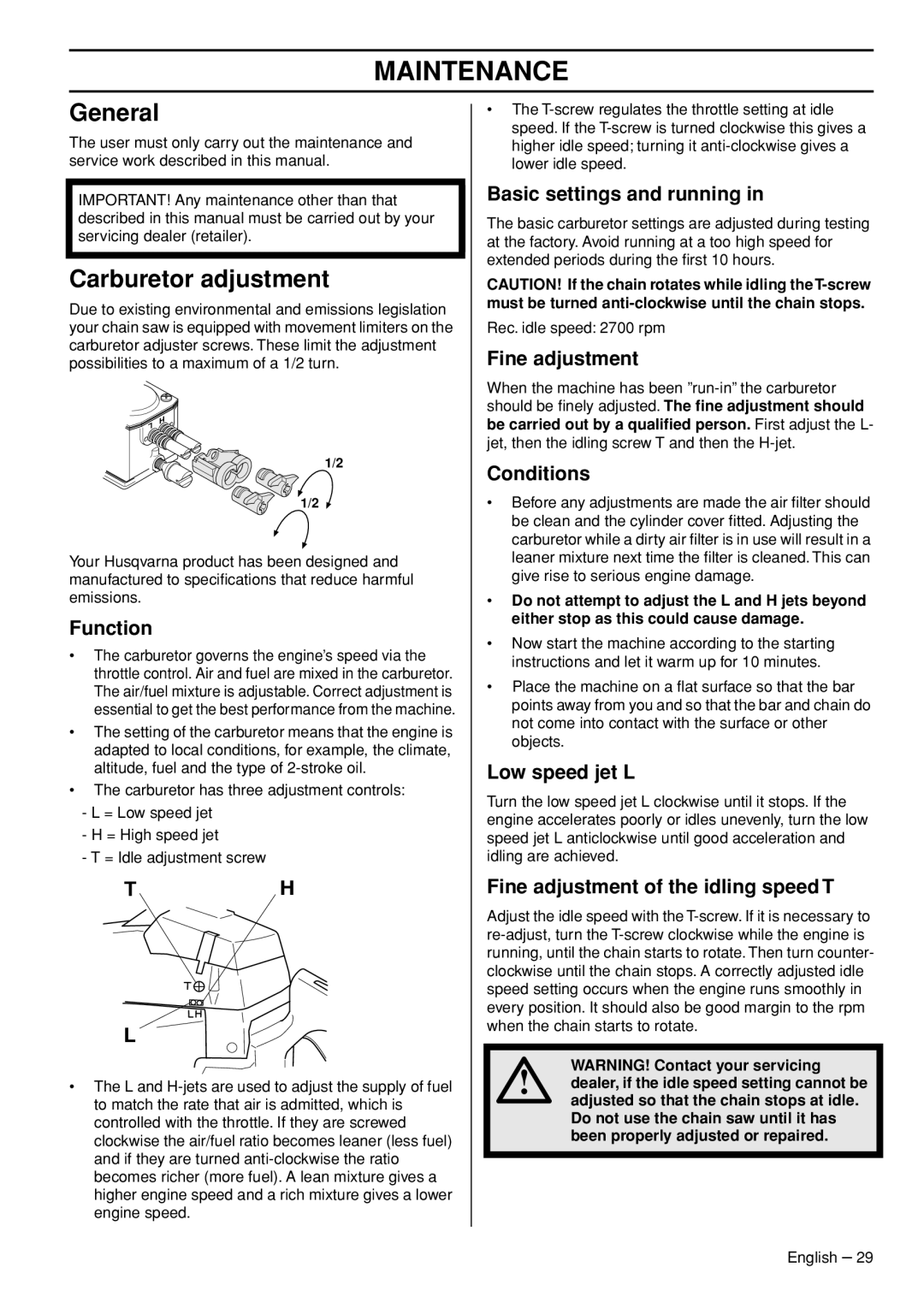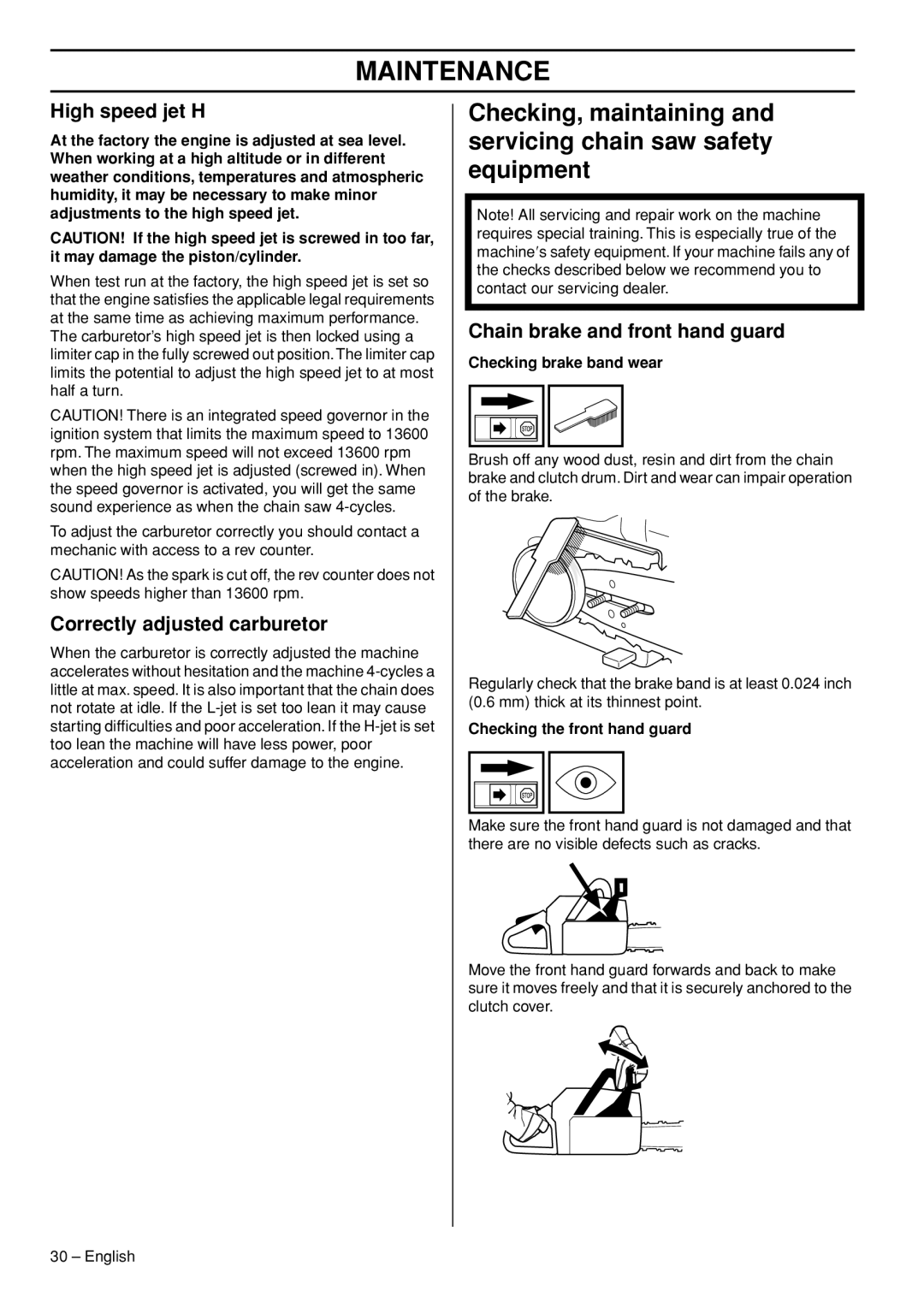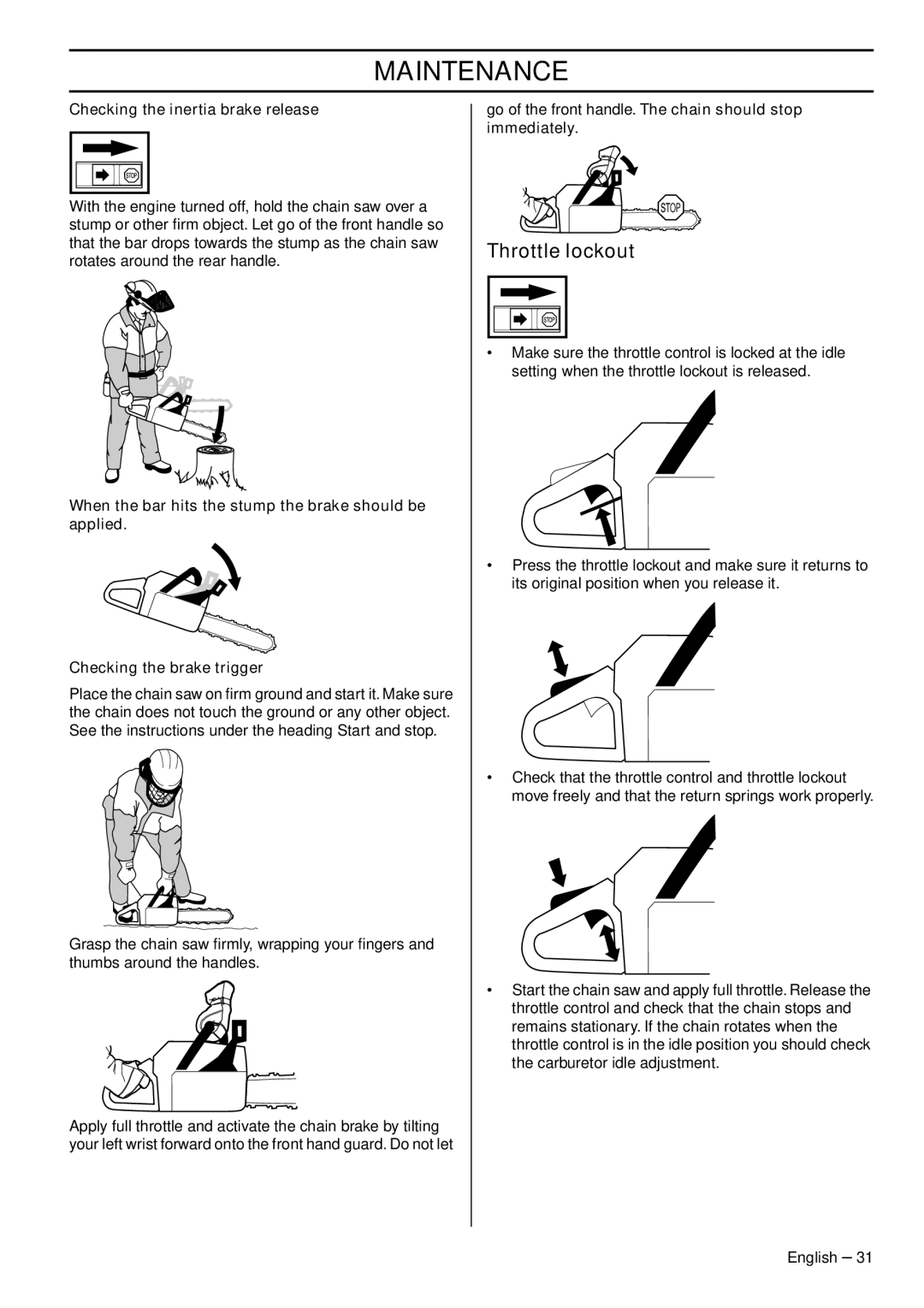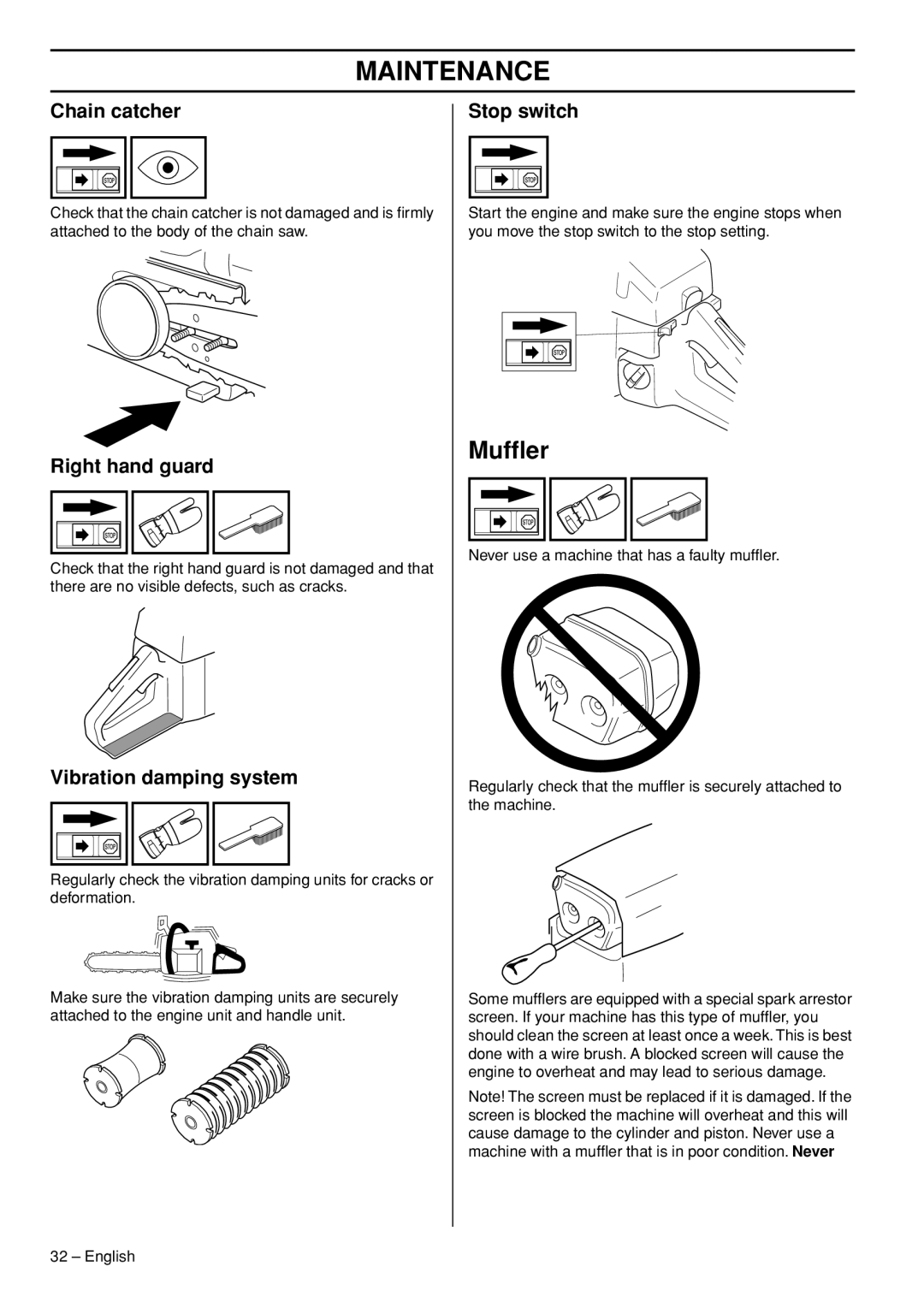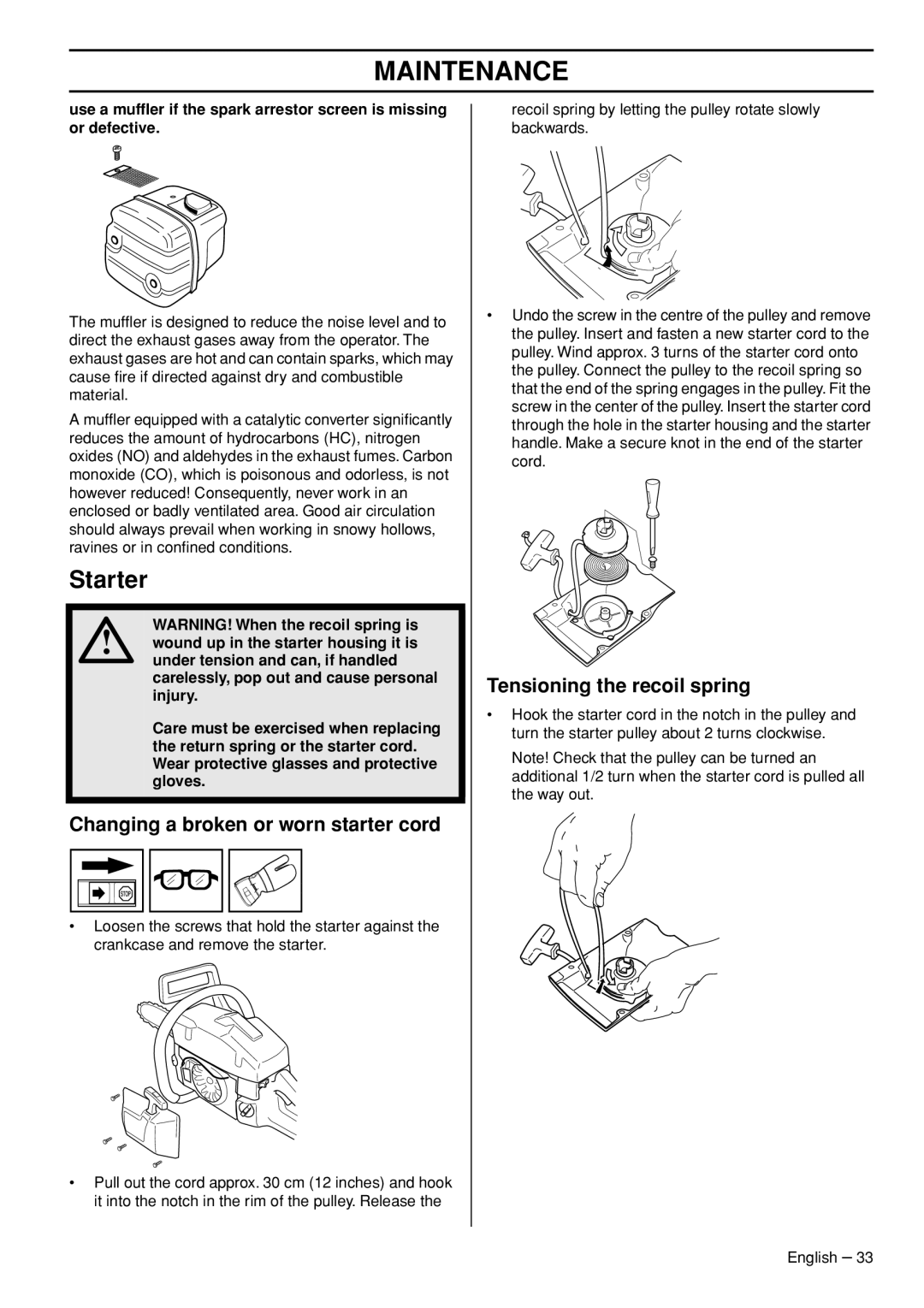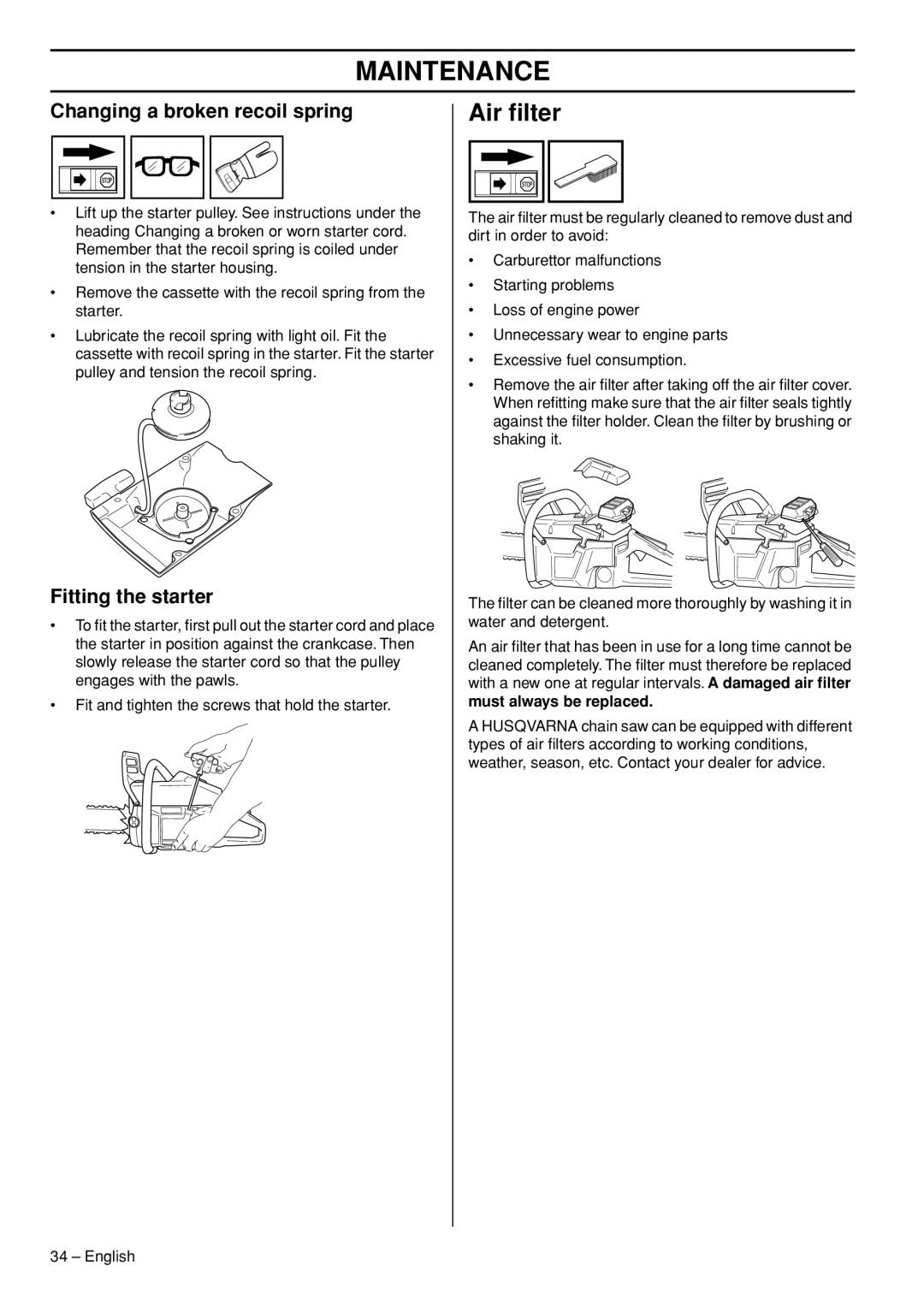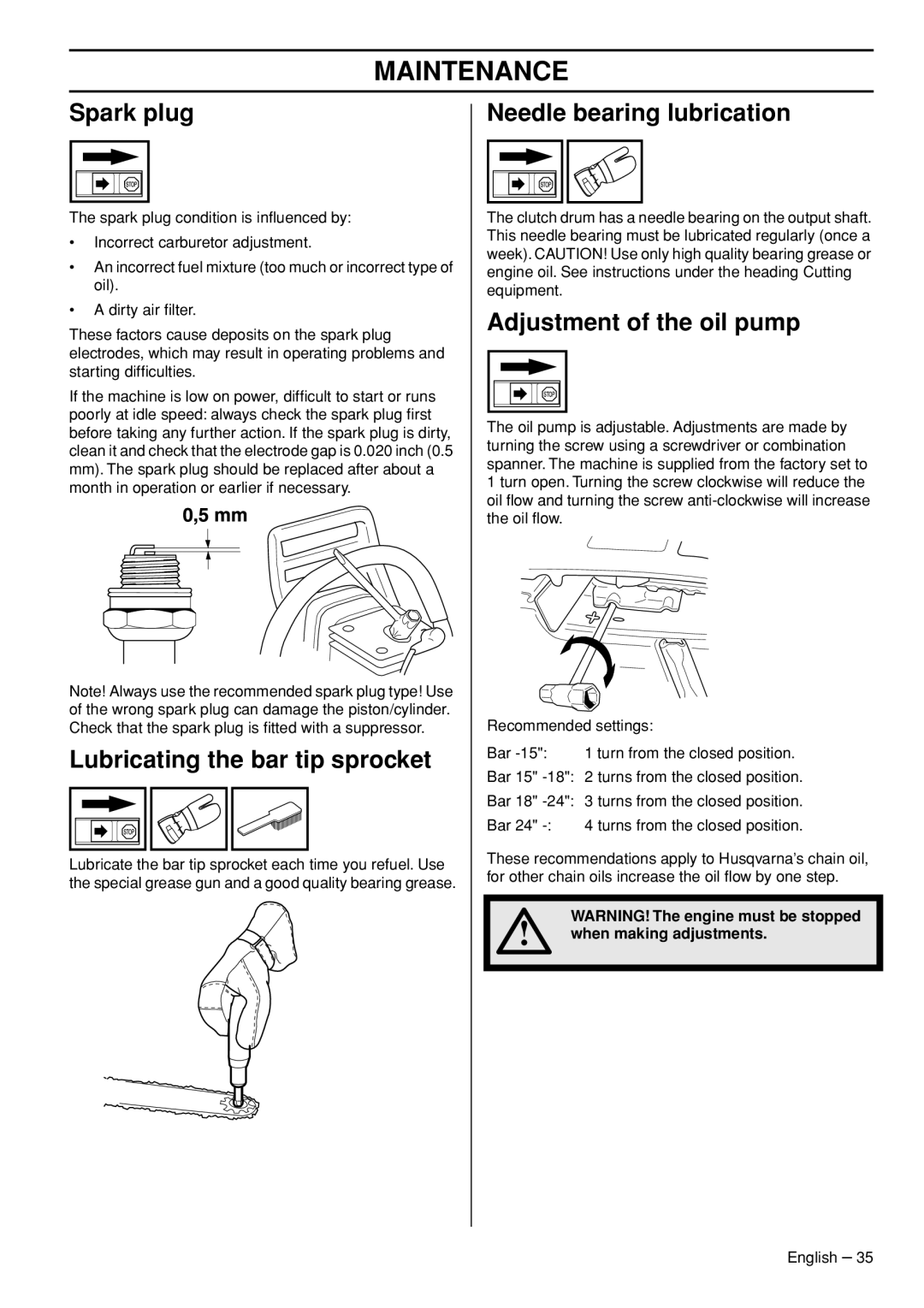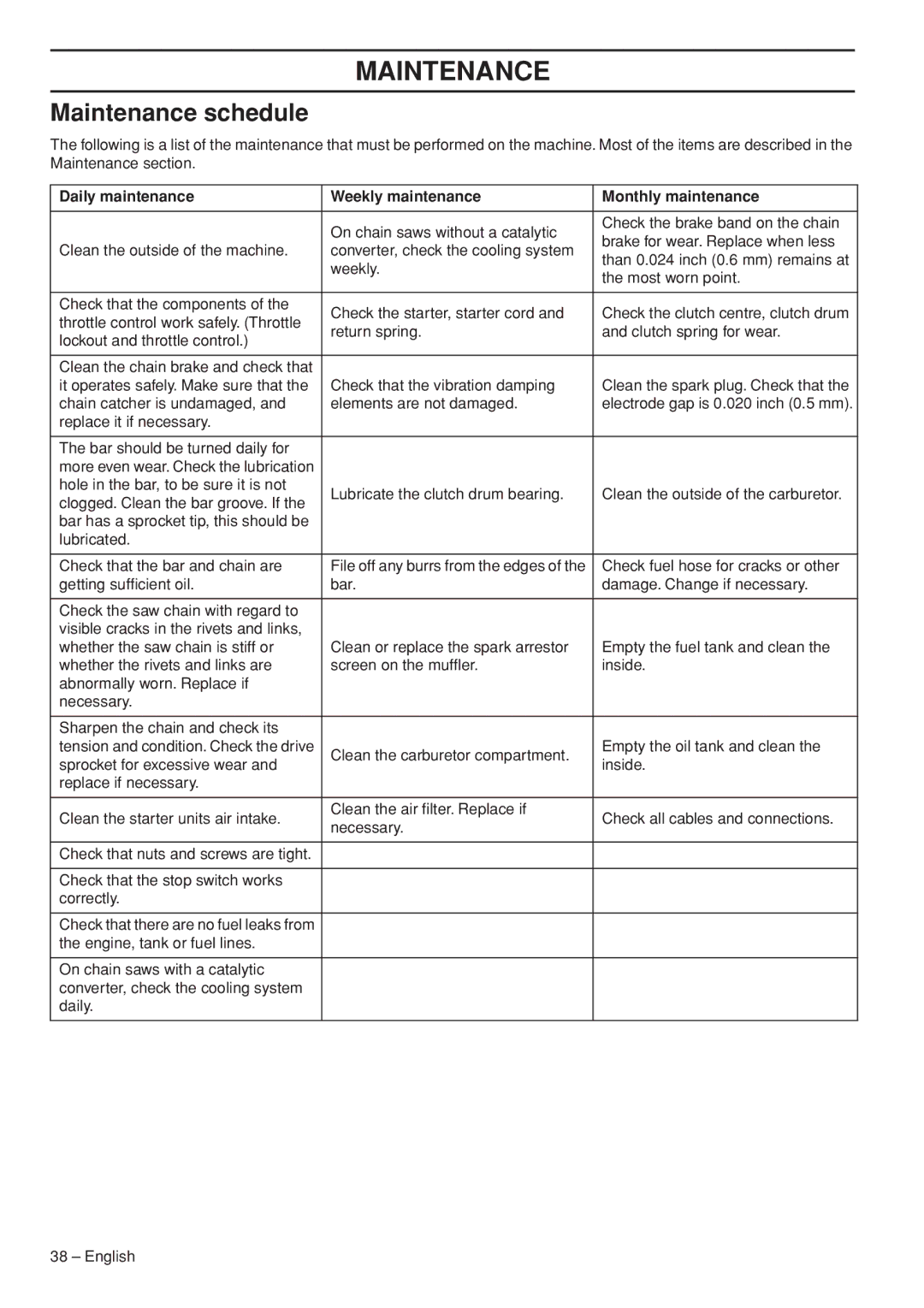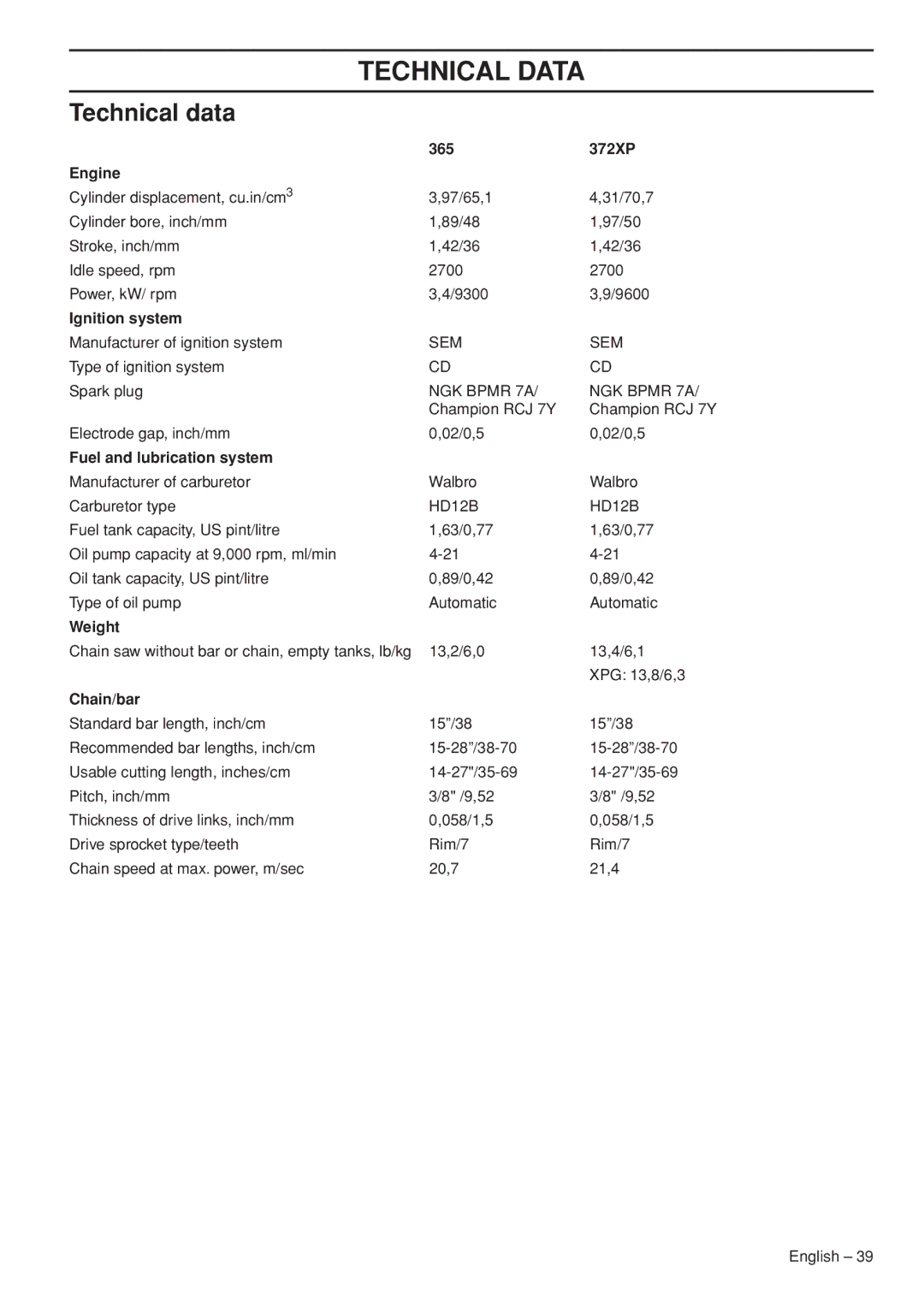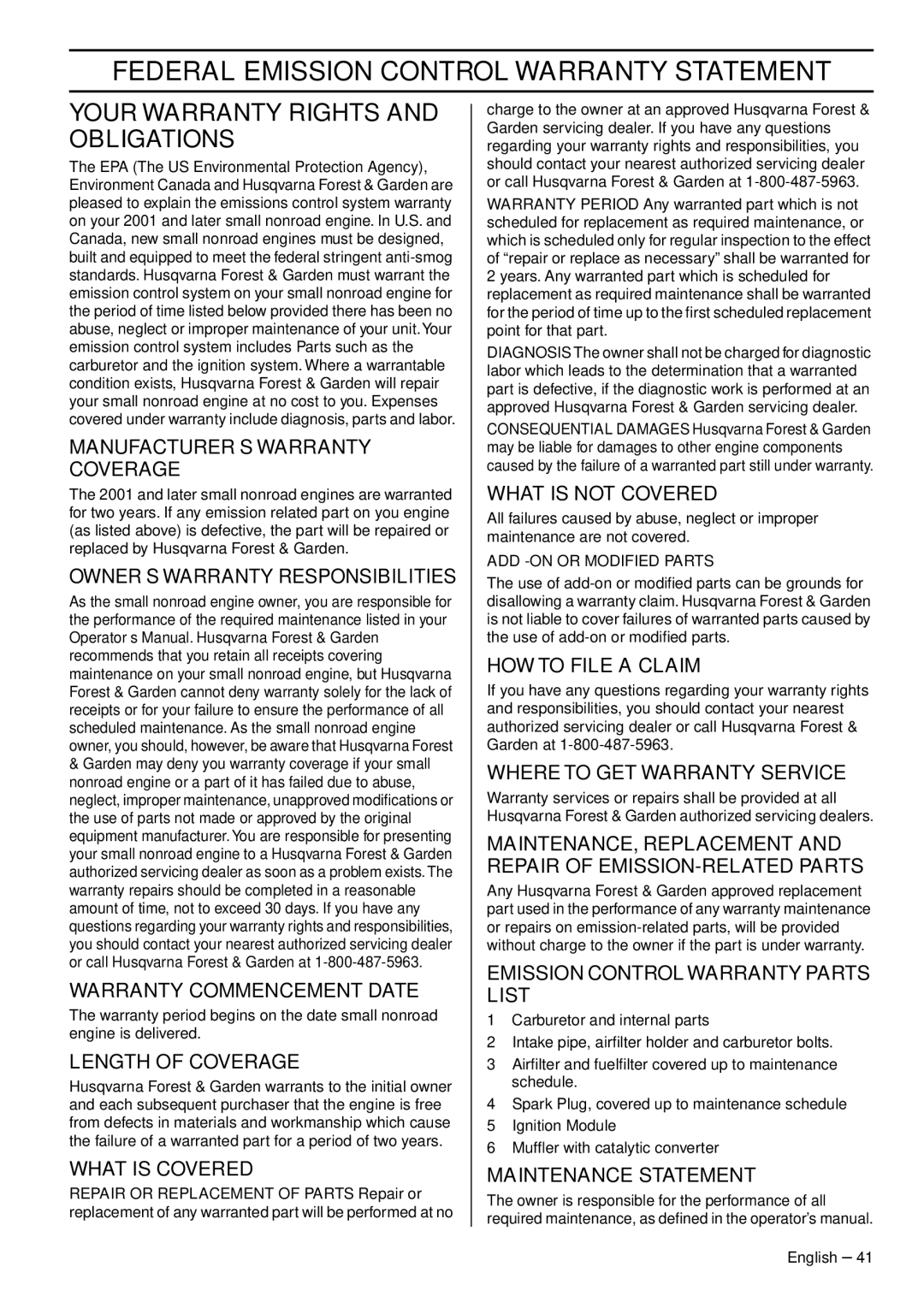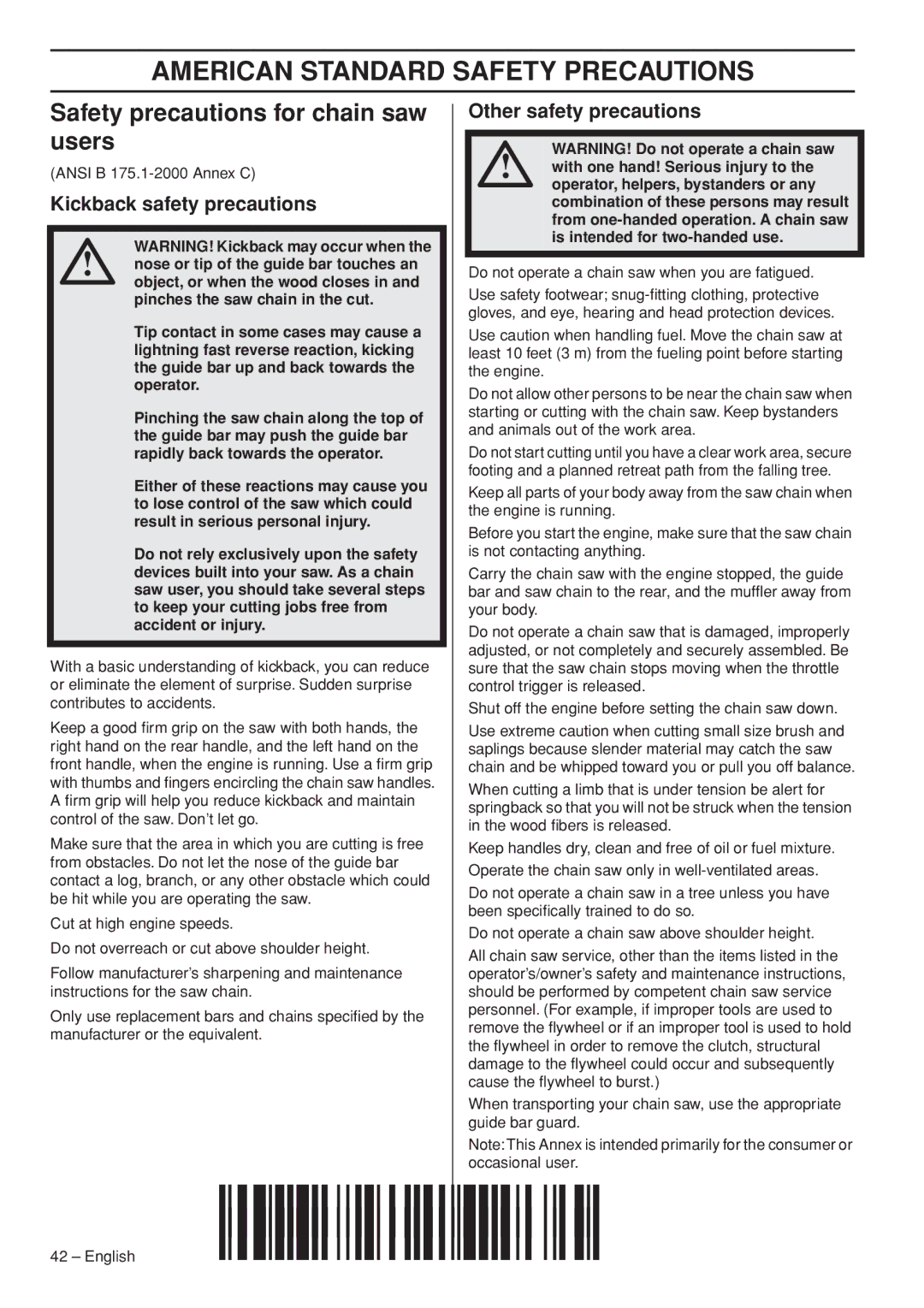
MAINTENANCE
Changing a broken recoil spring
•Lift up the starter pulley. See instructions under the heading Changing a broken or worn starter cord. Remember that the recoil spring is coiled under tension in the starter housing.
•Remove the cassette with the recoil spring from the starter.
•Lubricate the recoil spring with light oil. Fit the cassette with recoil spring in the starter. Fit the starter pulley and tension the recoil spring.
Fitting the starter
•To fit the starter, first pull out the starter cord and place the starter in position against the crankcase. Then slowly release the starter cord so that the pulley engages with the pawls.
•Fit and tighten the screws that hold the starter.
Air filter
The air filter must be regularly cleaned to remove dust and dirt in order to avoid:
•Carburettor malfunctions
•Starting problems
•Loss of engine power
•Unnecessary wear to engine parts
•Excessive fuel consumption.
•Remove the air filter after taking off the air filter cover. When refitting make sure that the air filter seals tightly against the filter holder. Clean the filter by brushing or shaking it.
The filter can be cleaned more thoroughly by washing it in water and detergent.
An air filter that has been in use for a long time cannot be cleaned completely. The filter must therefore be replaced with a new one at regular intervals. A damaged air filter
must always be replaced.
A HUSQVARNA chain saw can be equipped with different types of air filters according to working conditions, weather, season, etc. Contact your dealer for advice.
34 – English
